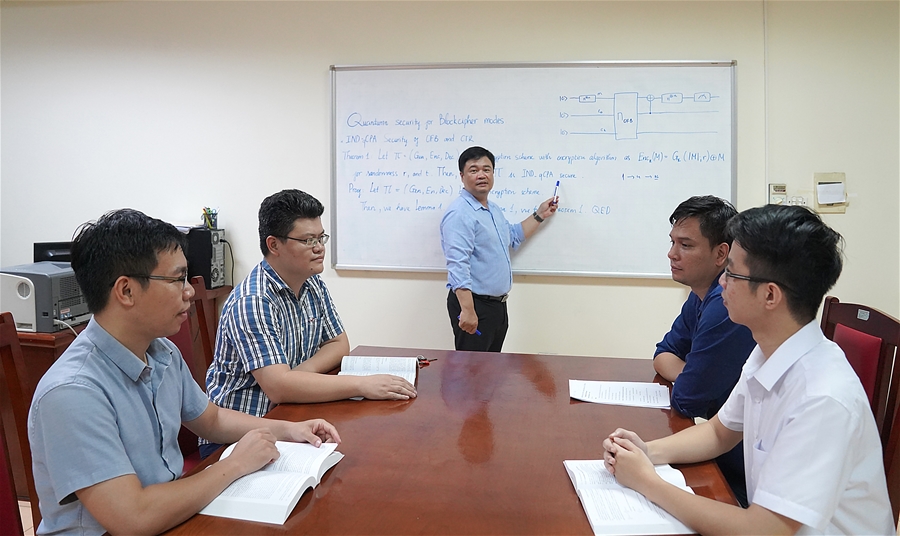Verification of cryptographic algorithms based on the use of binary random sequences simulation method with specified statistical properties
Abstract- The problem of obtaining a set of samples to evaluate the quality of cryptographic algorithms through the use of statistical tests has been presented. One describes new features of binary Markov chains, taking into account the dependence of the probability of binary vectors of different lengths. The analytical expressions for the limits calculated according to ranges of values of binary probabilities of multidimensional random variables on the probability of binary random variables smaller dimension are introduced. The reasons of the need for additional “reject” procedure in the simulation implementations of binary Markov processes are provided. The method of directed enumeration values of probability distributions of Markov ranks binary sequences is allowing to generate ergodic random binary sequence that allows you to completely abandon the “rejection” procedure. Presented algorithm implementing method is said having reduced computational complexity compared to known algorithms “Computing experiment to study the statistical properties of random binary sequences”.
Xem toàn bộ bài báo tại đây.
|
Tài liệu tham khảo [1]. Fomichev, V. M. “Methods of discrete mathematics in cryptology”, Moscow : Dialog-MIFI. pp. 424, 2010. [2]. Gustafson et al., “A computer package for measuring strength of encryption algorithms”, Journal of Computers & Security. Vol. 13, No. 8, pp. 687-697, 1994. [3]. T.Ritter, “Randomness Tests and Related Topics”, http://www.ciphersbyritter.com/RES/RANDTEST.HTM. [4]. Buslenko N. P., Shreider U. A. “A method of statistical tests (Monte-Carlo) and its implementation on digital computers”, Moscow: GIFML, pp. 226, 1961. [5]. Bharucha-Reid, A. T. “Elements of the Theory of Markov Processes and Their Applications”, MC GROW-HILL BOOK COMPANY, INC, pp. 512, 1960. [6]. Ermakov, S. M. “Statistical modeling. Part 1. Modeling of distributions”, Saint-Petersberg: SPGTU, pp. 63, 2006. [7]. Keypers, L. “Uniform distribution of sequences”/ L. Keypers, G. Niderreyter - Moscow: Science publishing house, pp. 408, 1985. [8]. Sovetov, B. Ya. “Modeling of systems” / Sovetov, B. Ya., Yakovlev S. A. - Moscow: Yurayt publishing house, pp. 343, 2012. [9]. Bliznuk, V. I. “Method of the directed search of ranks of distributions in problems of modeling of Markov binary sequences”, V. I. Bliznuk, M. Yu. Konyshev, V.A. Ivanov, S. V. Harchenko/ "Industrial ACS and controllers", no. 5, pp. 40-45, 2015. |
Mikhail Konyshev, Alexandr Kozachok, Konstantin Petrov





















